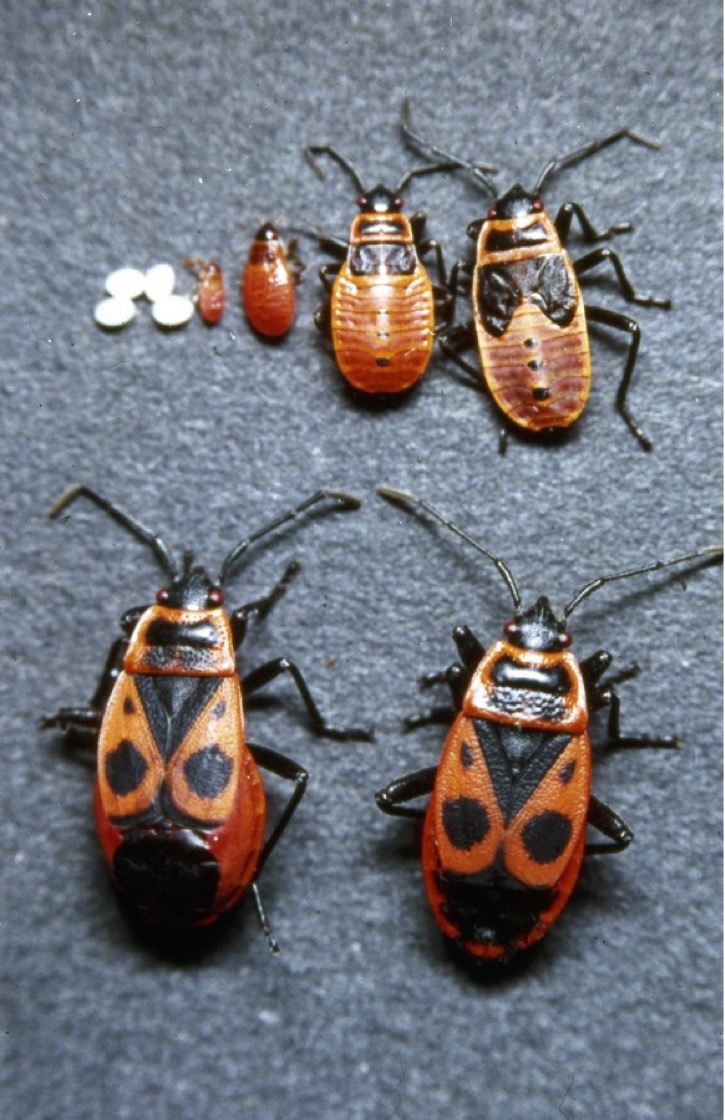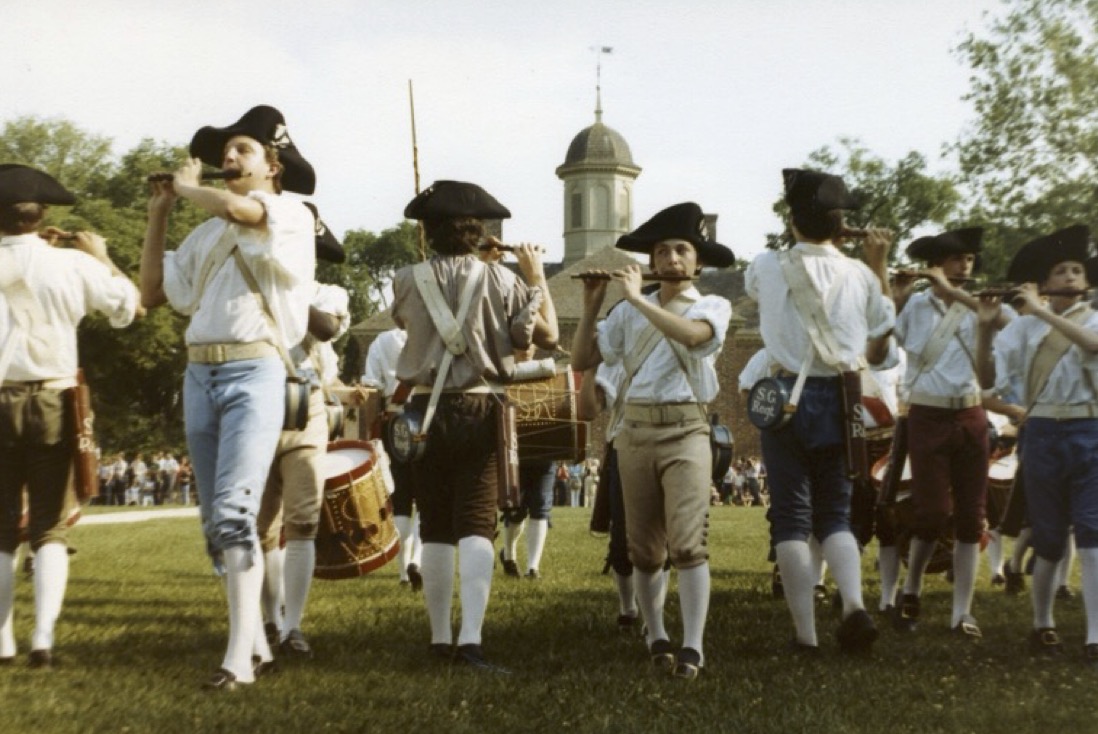The second edition of my book Insect Clocks was published in 1981, testifying to the many advances made in the field since 1976. Jean and I also travelled to Poland and Czechoslovakia at Easter, 1981, me to visit various laboratories and to give research talks. At that time both of these countries were still under the Communist yoke, although things were beginning to stir in Poland. When we arrived in Warsaw, Bronisław Cymborowski, our host, put us on the umpteenth floor of the Forum hotel giving us an unrivalled view of that other architectural giant, the Stalinist ‘Palace of Culture’. I gave a research talk in Bron’s department, and we were whisked around Warsaw to visit the offices of Solidarnosc, the trade union workers’ organisation that was beginning to challenge the authority of the Communist regime. Bron had visited me some years earlier in Edinburgh and I had one of his students, Jadwiga Giebultowicz, to work in my lab. Our visit to Warsaw led to a friendship and working relationship that continued for many years, Bron making a number of research visits to Scotland, and me to make several more visits to Warsaw and other parts of the country. During our stay in Poland we also went down to Krakow with its ancient University, where I gave another talk, and visited the near-by salt mines at Wieliczka with its miles of underground chambers including a chapel carved out of rock salt.
Jaga then put us on a train bound for Prague, telling the guard that I was “an important Professor from England”. She also instructed me to tell the border guards that we were to be in Prague for only three days, rather than our planned five - so that we would not need to change so much foreign currency. When we reached the Czech border, however, and were faced by fierce looking female border guards (with guns), I relented and admitted that our stay was to be for five days! The border guards were also puzzled as to why we were travelling to Prague from Warsaw, instead of flying directly from London. Perhaps they suspected that we were importing liberal notions from Poland to Czechoslovakia! Whilst in Prague we were hosted by Jan Zdarek who also became a close friend. We were very much taken by the ‘café culture’ of this beautiful city and were impressed that the food shops seemed quite well stocked in contrast to those in Warsaw. A joke circulating at the time has a Polish dog meeting a Czech dog at the frontier. The Polish dog expressed his envy at the abundance of meat in Prague, but the Czech dog said “at least you can bark!” We spent Easter weekend at Jan and Eva’s cottage in the Sudetenland and took part in the old Czech customs of scattering painted eggs in the garden and making whips out of osier stalks. With these we pretended to whip the ladies – until they surrendered with a kiss! I still have my rather feeble whip, hanging on the wall at home.
When I was in Jan’s lab in Prague I acquired a culture of the linden bug, Pyrrhocoris apterus, an insect much used by Czech colleagues in the study of photoperiodism and diapause. Since it can be kept on a diet of linden (Tilia) seed and water in small tubes or Petri dishes it offered me chance to perform formal analyses of the photoperiodic phenomenon in much simpler experimental set-ups than for Sarcophaga or Nasonia. I carried a Petri dish of these insects with me back to Edinburgh but, for some reason, tried to pass them around the side of the X-ray machine at the airport, perhaps fearing that irradiation might cause mutation. Next thing I knew was that I was taken to one side for questioning, to see whether these insects were dangerous. I knew that I was in the clear however, when I was asked whether they would “crawl up the stewardesses’ legs during the flight”. When I assured them that they were quite safe, I was allowed to board the plane with my precious cargo.

Pyrrhocoris apterus, the Linden bug
Back in Edinburgh I performed a number of experiments with Pyrrhocoris. As expected from earlier work by Ivo Hodek, it turned out to be a long-day species that entered an intense reproductive or ovarian diapause under short days. It also presented a number of unusual features. I found that diapause induction and termination were both under photoperiodic control, but the critical day length for the former (about 15.75 h per 24) was about one hour shorter than that for termination. Photoperiodic termination of diapause, however, was abolished after 12 to 16 weeks of chilling. More unexpected was the observation that the rate of nymphal development was considerably protracted at day lengths close to the critical value, possibly allowing a greater number of inductive cycles to be accumulated, thereby ‘sharpening up’ the discrimination between long and short days. Even more unexpected was the discovery that Pyrrhocoris, unlike most other insects, seemed to ‘measure’ day length rather than night length, thereby underlining the fact that fundamental differences probably exist between species with regard to the way that they respond to seasonal changes in photoperiod.
By 1981, however, I felt that I had taken formal analyses of the photoperiodic ‘clock’ as far as I should - for the time being at least. I therefore began looking around for another way of approaching the phenomenon. Since the formal analysis of photoperiodism involved exposing insects to complex light cycles and observing their diapause or nondiapause responses, an obvious change of approach would be to investigate the hormonal changes in diapause-destined insects. In other words, instead of tracking in towards the ‘central’ photoperiodic mechanism along the photic or ‘input’ pathway, an effort should be made to track back to the central mechanism up the endocrine or ‘output’ pathway. To do this I clearly needed to learn some modern endocrinological techniques.
Casting around the appropriate literature I was much attracted by the work of Larry Gilbert in Chicago (Northwestern University) who had recently (1980) written an authoritative review of insect endocrinology with ‘Skip’ Bollenbacher and Noelle Granger in the Annual Reviews of Physiology. Larry’s group was clearly one of the best of its kind, recently producing excellent work on the PTTH-activation of the prothoracic glands in the tobacco horn worm moth, Manduca sexta, a species I knew possessed a typical pupal diapause. So, I wrote to Larry asking if I could spend a few months in his laboratory learning relevant techniques that might be of use to me with Sarcophaga. What I didn’t know at the time was that M.F. Bowen, who I had met earlier at Pacific Grove, was now a post-doc in Larry’s lab working on the endocrinology of diapause in Manduca, and that she enthusiastically supported my request. In addition, Larry had recently accepted a chair in Biology at the University of North Carolina at Chapel Hill and was about to move his entire laboratory south to those warmer climes. By 1982 that move had been completed and I had arranged a six month sabbatical at Chapel Hill. Jean and I travelled out to North Carolina soon after New Year 1983, and so began a long association and friendship with Larry and his group.
When Jean and I arrived in Chapel Hill the University was still in recess, but Larry put us in the Carolina Inn where we enjoyed southern hospitality for the next 10 days and were able to take the opportunity of exploring the town and its facilities. Later, we moved into a house in Wesley Drive and I began to enjoy the local roads on my bicycle. At the University I gave a series of 24 lectures on Biological Clocks; this paid me a salary as a temporary member of the Biology faculty and helped to meet my expenses during the sabbatical. In the lab I soon got down to work learning endocrinological techniques such as radioimmunoassays for ecdysteroids in Manduca, working mainly alongside M.F. Bowen. M.F. (whose Christian names were Mary Frances, but a bit too Catholic for her tastes!), was already involved in aspects of endocrinology of the diapause syndrome in Manduca and had shown that the prothoracic glands of diapausing pupae became unresponsive to PTTH stimulation by the brain. This meant, in essence, that diapause was controlled by a dual ‘belt-and-braces’ inactivation of the endocrine system: short day length had somehow switched off the release of the cerebral neuropeptide, PTTH (prothoracicotropic hormone), and that the prothoracic glands, normally responding to PTTH to produce the ‘moulting’ hormone, ecdysone, had in the absence of PTTH themselves become refractory.

The Old Well at Chapel Hill, North Carolina
In addition to learning some of these techniques, which were later to become so useful in Sarcophaga, M.F. and I began a study in Manduca that was to lead to the first demonstration of an in vitro regulation of a photoperiodic mechanism in any organism, plant or animal. We knew that pupal diapause in Manduca could be induced by just three short day cycles given to the mature larva. We therefore removed the brains and their associated endocrine glands from short-day reared (diapause-destined) larvae and exposed them in vitro to either three long or three short-day cycles. The brains, by now stripped of all other tissues were then implanted into the thorax of diapause-destined larvae where the implanted brains could be seen clearly just below the integument. After allowing these larvae to pupate, the pupae were examined to see whether they metamorphosed into adult moths (the long-day pathway) or remained in pupal diapause. The outcome of the experiment was clear: most of the larvae receiving an implant of a short-day brain remained in pupal diapause, whereas most of those receiving long-day implants went on to emerge as adult moths. In short, exposure of the brains to just three long-day cycles in vitro had operated the photoperiodic clock in the complete absence of the rest of the body. This was the first unequivocal demonstration that the entire photoperiodic mechanism, from photoreceptor to hormonal output, was contained in the insect’s brain. The work was published in the Proceedings of the National Academy of Sciences.

The Biology Department at Chapel Hill
In March 1983, I was invited by Bernard Philogene to give a talk on photoperiodism and diapause induction in Ottawa, Canada. So, leaving Jean behind in North Carolina, I flew up to Canada via New York. I found that I was to address a very large public gathering, part of a series of lectures on “Time”. After my talk I received several searching questions, including one about planetary movements. Afterwards I was told that the questioner was none other than the Astronomer Royal of Canada! From Ottawa I then travelled north to Quebec City to visit Jeremy McNeil who I had met on several occasions at various meetings. Although it was still early March it was by all accounts unseasonably warm: snow was still banked up at the sides of the roads, but the ice was beginning to break up on the Saint Lawrence River. After this visit Jeremy, his wife Joanne Delisle and I drove down to Montreal, from where I flew back to Raleigh-Durham and Chapel Hill. Another highlight that spring was a visit from my old cycling friends Tom Simpson and his wife Sheila, now living near Toronto, who drove down to Chapel Hill to visit us.
In the summer of 1983 Michael came out to visit us in Chapel Hill and we went on several travels around the Eastern States, visiting the Appalachians, the outer banks of North Carolina, Kitty Hawk and Williamsburg.

The sign at Kitty Hawk celebrating the first flight by the Wright brothers

At Williamsburg, Virginia
